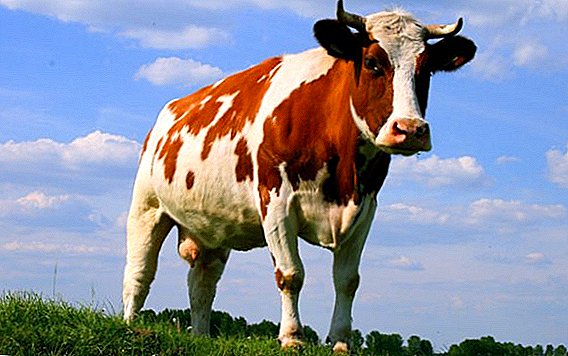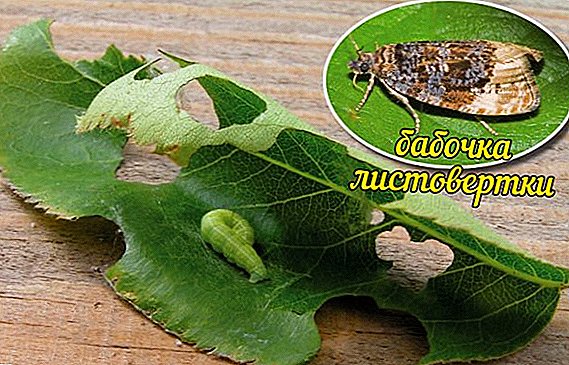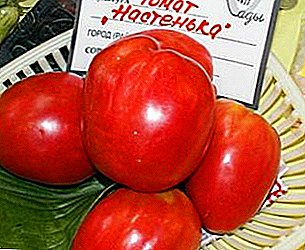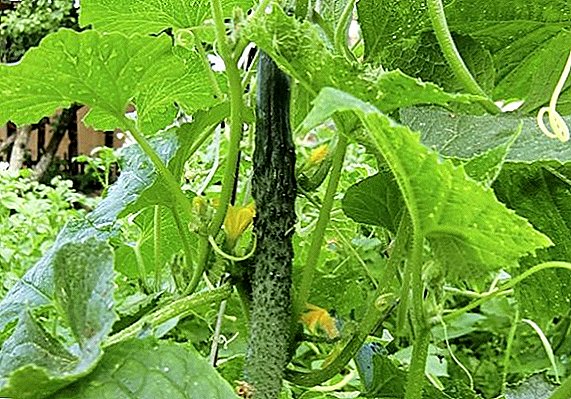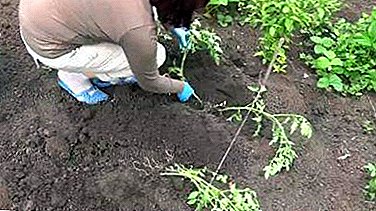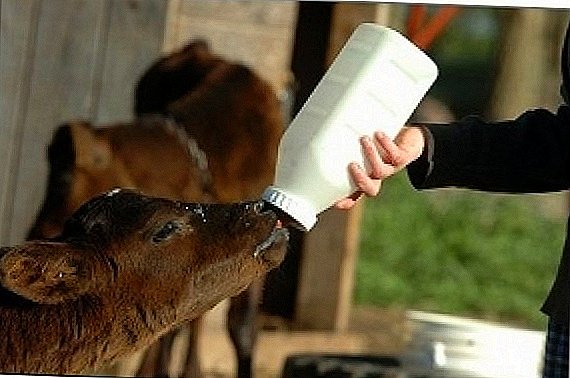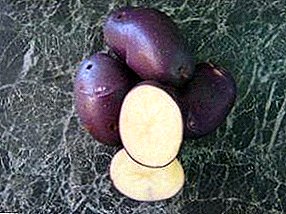
The potato variety "Blue Danube" has become widespread around the world and enjoys a certain popularity.
Due to its extreme resistance to most diseases, these potatoes are grown in organic farming.
In this article, we offer you a detailed description of the variety, its characteristics, as well as the characteristics of cultivation.
Blue Danube Potatoes: variety description
| Grade name | Blue Danube |
| general characteristics | characterized by high yield, suitable for organic farming and business |
| Gestation period | 65-80 days |
| Starch content | 13-16% |
| Mass of commercial tubers | 100-200 g |
| The number of tubers in the bush | 8-12 pieces |
| Yield | 350-400 c / ha |
| Consumer quality | good taste, poor stewiness |
| Recumbency | 95% |
| Skin color | Violet |
| Pulp color | white |
| Preferred growing regions | any soil and climate |
| Disease resistance | resistant to major diseases of the nightshade |
| Features of growing | standard agricultural technology |
| Originator | Sárvári Research Trust (United Kingdom) |
 Root crops of this variety have an oval-oblong shape.
Root crops of this variety have an oval-oblong shape.
They are covered with a dense blue-violet skin with medium-sized eyes, under which the white flesh hides. Tuber weights range from 100 to 200 grams, and their starch content reaches 13-16%.
Potatoes "Blue Danube" was bred in Germany at the beginning of the XXI century. The potato variety "Blue Danube", or Blue Danube, belongs to vegetable crops of medium term ripening, is grown in different countries.
The tubers are oval-oblong in shape, large, with a dense skin of dark blue color and white flesh.
Main characteristics
The “Blue Danube” potato, characteristic of which differs from similar crops, belongs to medium early potato varieties. It can be grown in any region of the Russian Federation. From one hectare of vegetable garden usually collect from 350 to 400 centners of the crop.
On the yield of other varieties you will find information in this table:
| Grade name | Yield |
| Blue Danube | 350-400 c / ha |
| Ilinsky | 180-350 c / ha |
| knapweed | 200-480 c / ha |
| Laura | 330-510 c / ha |
| Irbit | up to 500 kg / ha |
| Blue-eyed | up to 500 kg / ha |
| Adretta | up to 450 kg / ha |
| Alvar | 290-440 c / ha |
| Breeze | up to 620 c / ha |
| Zekura | 450-550 c / ha |
| Kubanka | up to 220 kg / ha |
This potato has a table purpose and is characterized by a pleasant taste and aroma. He does not crack and does not boil softtherefore ideal for making salads.
The Blue Danube easily tolerates drought and does not impose any special requirements on the ground, and also is characterized by high adaptation to various adverse factors.
The shoots of the Blue Danube potato variety are characterized by an average height and the presence of a hard stem. These are strong erect bushes covered with green leaves and yellow flowers with purple corollas. Bushes are very powerful, sredneroslye, leafy prevent weeds from sprouting through them.
When creating this variety was involved well-known high resistance to most diseases of the potato called "Sarpo Mira". It is characterized by extreme resistance to damage. and diseases such as scab, blackleg, fusarium, Y-virus, some types of nematodes, potato mosaic, anthracnose, oosporosis and late blight.
A photo
To view the appearance of the potato "Blue Danube" you can see the photo below:





Features
Features of agrotechnology are as follows:
For planting such potatoes should choose a fertile and sunny area in which there is no stagnant moisture. Planting rows should be placed from north to south, as this will help all the plants to be evenly lit.
IMPORTANT! A couple of weeks before planting in open ground planting material should be placed in a warm room.
For planting, you should choose only selected varietal tubers, which are not damaged.
The soil for planting tubers should be heated to at least 8 degrees Celsius. The main activities for the care of potatoes after planting are regular watering, hilling, mulching and fertilization.
Read more about how to feed potatoes, how and when to apply fertilizer, how to do it when planting.
To slow down the growth and development of foliage after flowering, thereby ensuring a uniform flow of nutrients to the roots, you should break the stalks of plants at a distance of 15-20 centimeters from the ground.
We have prepared for you a series of articles on how to store potatoes in the winter, on the balcony, in drawers, in the refrigerator, and peeled. And also what are the terms, temperature and possible problems.
With the keeping quality of other varieties of potatoes, you can find in the table below:
| Grade name | Stickiness |
| Blue Danube | 95% |
| Burly | 97% |
| Felox | 90% |
| Triumph | 96% |
| Agatha | 93% |
| Natasha | 93% |
| Red lady | 92% |
| Red Scarlet | 98% |
| Uladar | 94% |
| Bullfinch | 95% |
| Rosara | 97% |
Diseases and pests
Blue Danube practically free of diseasetherefore, it can be grown without the use of chemicals. However, information about the main diseases of the nightshade can be useful for you: Alternaria, fusarium, vetricilous wilt, scab, cancer, late blight.
 As for pests, no one is immune from attack, for example, the Colorado potato beetle. Fighting it is a certain system of measures.
As for pests, no one is immune from attack, for example, the Colorado potato beetle. Fighting it is a certain system of measures.Read all about folk methods and chemicals that can destroy this enemy.
Potatoes of this type is one of the leaders in taste.
The potato variety "Blue Danube", whose characteristics we studied, can grow in poor soils, does not deteriorate and does not germinate during prolonged storage, and its unusual appearance will delight your eye.
As you know, there are many ways to grow potatoes. Read all about Dutch technology, about growing under straw, in bags, in barrels, in boxes, early grades, without hilling and weeding, from seeds.
We also offer to familiarize yourself with other varieties of potatoes that have different ripening terms:
| Middle late | Medium early | Superstore |
| Son | Darling | Farmer |
| Crane | Lord of the expanses | Meteor |
| Rogneda | Ramos | Juvel |
| Granada | Taisiya | Minerva |
| Magician | Rodrigo | Kiranda |
| Lasock | Red Fantasy | Veneta |
| Zhuravinka | Jelly | Zhukovsky early | Blue | Typhoon | Riviera |


